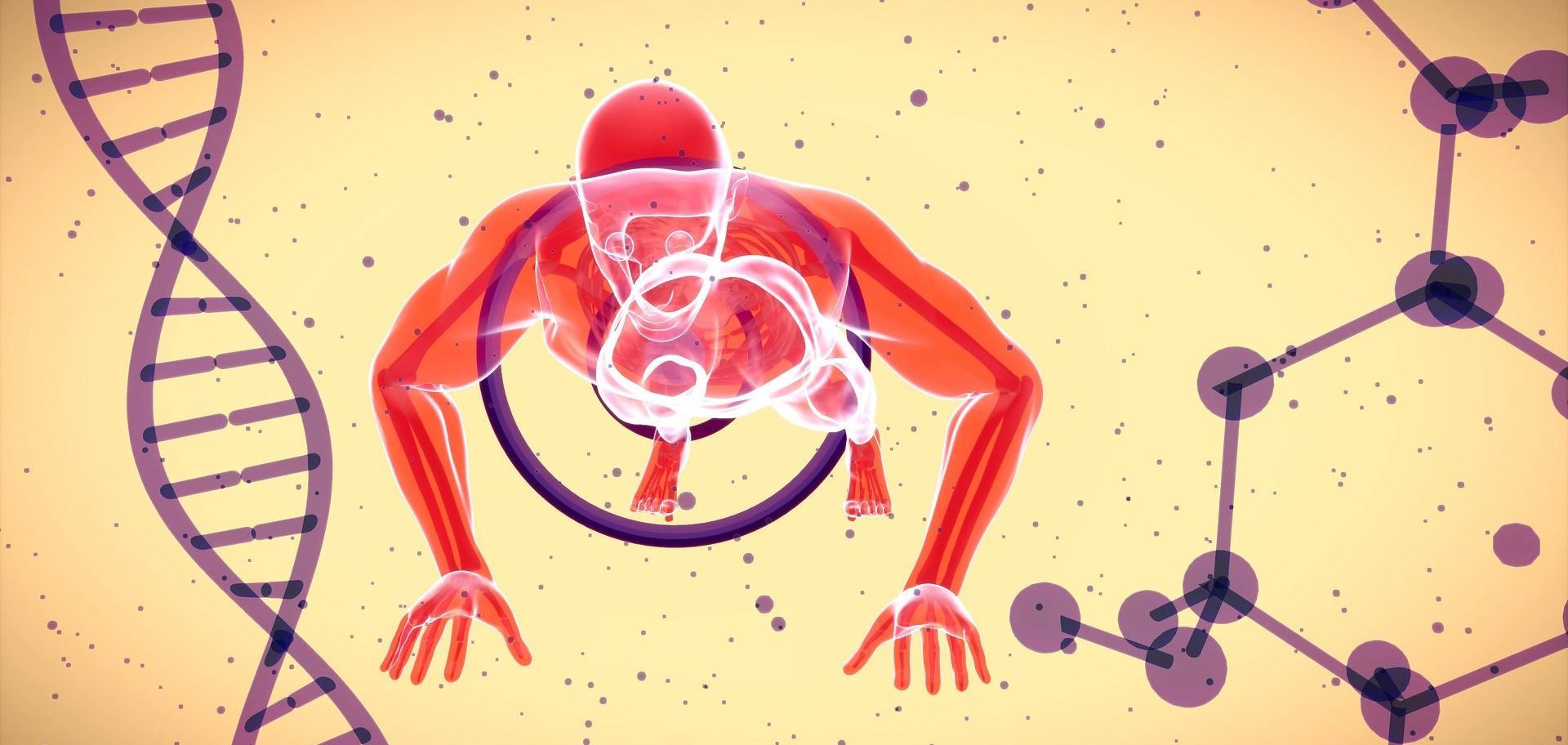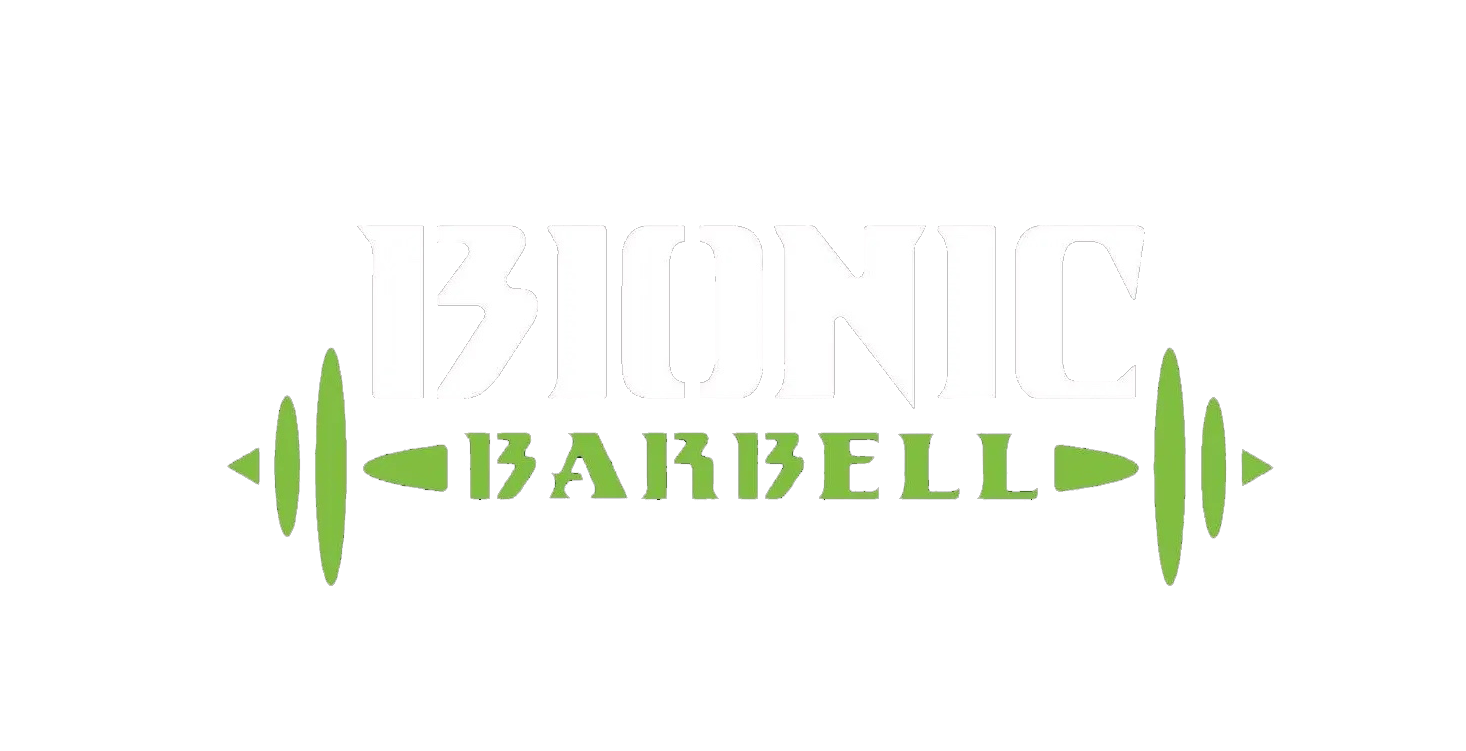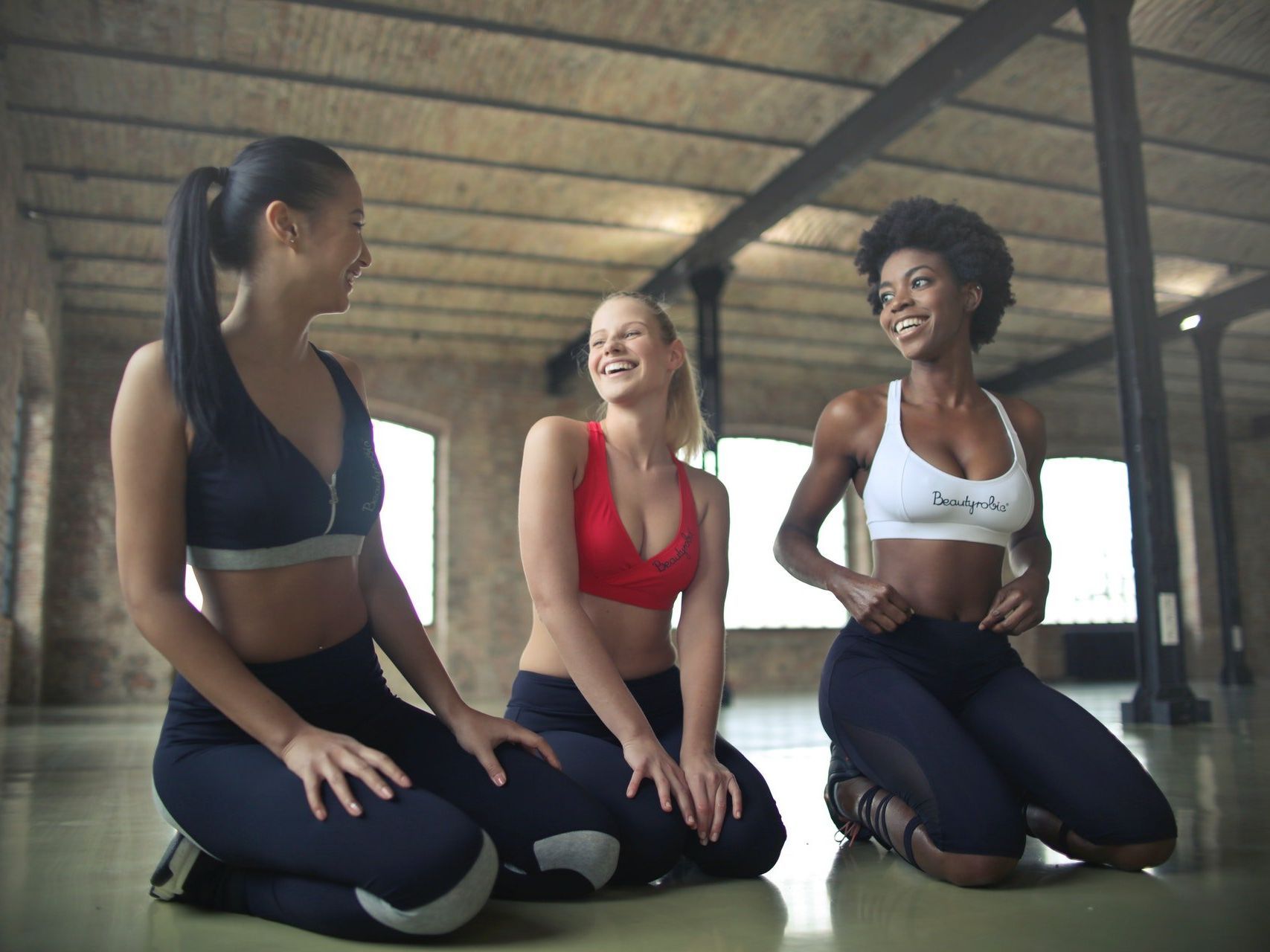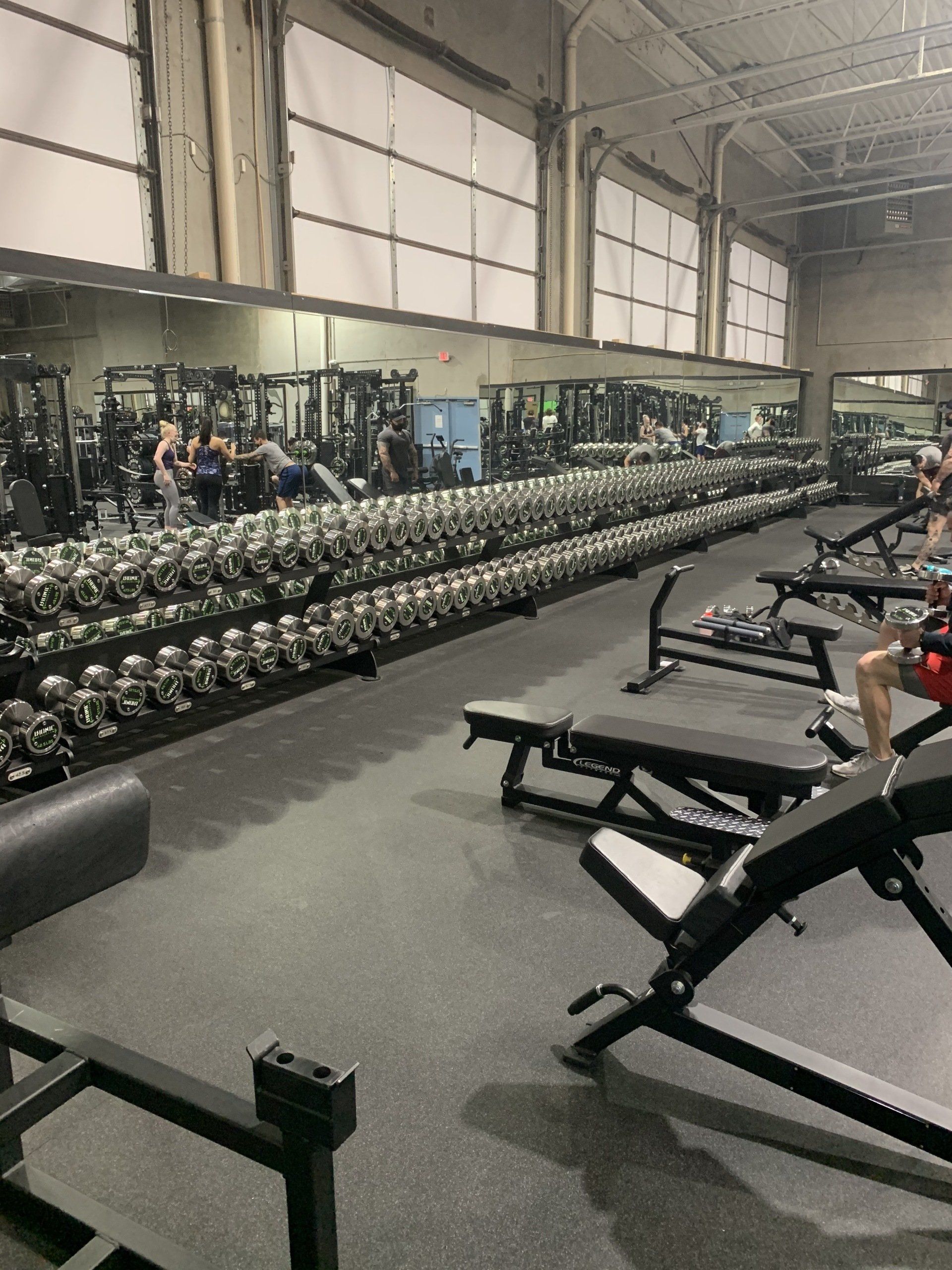The ABC's of Workout Anatomy
The Science of Fitness

It’s not like you went to school to understand the difference between a pectoral exercise and a quadriceps exercise. Oh, you’re a healthcare professional? Well, you can probably skip this one. For everyone else, it helps to know that a lot of exercise machines and equipment are actually named after the muscle group they support.
A basic understanding of your body’s anatomy will not only help in understanding all of the exercise options for a workout but will give you a better picture of what is meant by a whole-body workout experience.
A whole-body workout routine will burn more calories, is more well-rounded, and is a great way to promote overall good health. You want to complete a series of exercises that strengthens both muscles and cardio. A whole-body workout experience is also the best way to prevent injuries, and it supports joints, strength, balance, and flexibility.
With that in mind, we’re going to dive into and simplify the following systems and discuss why each is important for a beginner to understand when they find a regular gym:
- Muscle Groups
- Bones and Joints
- Organs
Please Note:
This is just the tip of the iceberg to help beginners understand their bodies and how to maximize a workout routine. Our trainers at
Bionic Barbell eat up this science stuff, so if you are interested in going down the rabbit hole of anatomy, just ask.
Also, we’re going to provide a few exercise examples for each part of the anatomy discussed, but will not explain the step-by-step or correct form for the exercise. There are a ton of YouTube videos and how-to articles with examples (plus our trainers are always available to help). Our goal is to give you a general idea for options.
An exercise routine should match your goals and current fitness level, so please take some time to think through the best plan of action for you.
Muscle Groups for Beginners
As a beginner, the best way to start wrapping your head around a whole-body workout routine is how exercises engage different muscle groups. This does not mean you need to start memorizing all six hundred or so individual muscles in the human body. But, understanding the groups of the biggest muscles across the body, how they work, why they are important, and what exercise supports their growth and stability is a good place to begin.
1. Legs and Buttocks
Your legs are made up of some of the strongest muscles in the body. Legs are not only what allow you to walk around, but they are critical to your overall body’s structure and maneuverability. Legs directly control the movement of your pelvis and hips and even help support your back.
The major beginner muscles we are going to discuss in the legs and buttocks region are (1) quadriceps, (2) hamstrings, (3) calves, and (4) glutes.
2. Quadriceps
Quadriceps, or quads, are your biggest leg muscles. They are located above your knee on the upper part of your leg. These muscles are between your hips and your knees, and they are what are responsible for straightening the knee and bringing up the knee. If you hear an exercise contributing to “knee extension” or “hip flexion,” there is a good chance it’s connected to the quad.
When engaged, quads contribute to a person’s ability to walk, run, kick, jump, cycle, etc. Due to their size and location, quadriceps also sustain a lot of impact, so it’s important to both strengthen and stretch them.
While aerobic exercises like jogging, running stairs, elevation hiking (the Organs can strain anyone’s quads), and cycling all work this massive leg muscle, there are specific repetition-based exercises that focus on quads:
- Squats
- Lunges
- Squats
- Leg Lifts
- Box Jumps
- Step Ups
- And Squats
3. Hamstrings
A well-rounded workout is all about balance, and something a beginner will hear a lot is “if you work out one side, you need to equally work out the opposite.” Hamstrings are the opposite of quadriceps and are the muscles that are located on the back of the thigh. Quads help extend the knee, so hamstrings help with bending the knee. Quads help flex the hip and bring the leg up, so hamstrings help extend the hip and bring the leg back.
Hamstrings also support the pelvis region and, when engaged, directly impact day-to-day movements like sitting and walking. Healthy hamstrings need regular exercise and stretching as well. Again, like quads, hamstrings are engaged through exercises such as climbing stairs, but some specific repetition-based exercises include:
- Leg Curls
- Deadlifts with Dumbbell
- Power Lifts
- Glute Ham Raises
- Donkey Kicks
4. Calves
Calve muscles are below the hamstrings and run down the bottom part of your leg. Located between the back of your knee and the heel of your foot, calves support moving your foot, jumping, and propelling you forward by pressing you onto your tippy-toes. They propel you forward and upward.
Even though they are smaller, calves support the bottom half of your legs, so it’s important to not have an imbalance in strength. Strong and flexible calves are just as important as strong and flexible quads and hamstrings. Calves also help protect your ankles, so many calf exercises also support ankle strength:
- Calf Press
- Ankle Rolls
- Calf Raises
- Jump Rope
5. Glutes
Glute muscles are the majority of what makes up the buttocks and connect from the pelvis to the upper leg bone. These muscles support the part of the body that serves as the transition point from the legs to the body’s trunk. Glutes directly contribute to a person’s overall core strength and balance, but they also protect the hips and lower back.
Glute muscles support a human’s ability to stand up straight. They actually contribute to keeping us balanced and upright and help propel us forward. Strong glutes, in turn, help support all of the leg muscles discussed above, helping with extension, turning out the hips, bringing the leg across the body, and bringing the leg out to the side of the body.
Some specific glute exercises include the following, and you will also notice many of the same leg exercises mentioned already because glutes are so interconnected:
- Hip Thrusts (both legs and single leg hip thrusts)
- Lunges (stand-alone or with dumbbells)
- Squats
- Resistance Band Walks
- Reverse Lunge with Knee Drive
- Hip Raises
Arms and Shoulders
Arms and legs work together, so strong arms contribute to powerful hips and legs. Arms and shoulders support a healthy core and good posture and directly contribute to back and neck strength. The main muscle groups in the arms and shoulders are deltoid muscles, biceps, triceps, and trapezius muscles (or traps).
1. Deltoids
Deltoids are actually three different muscles running along the upper side of the arm, upper backside of the arm, and across your front shoulder joint towards the front of your neck. They help raise the arm out and up to the side of the body and behind. These muscles basically help move your arm in all different directions and protect/stabilize your shoulder joint.
Common deltoid exercises often involve lifting something up with arms straight out to the side and include the following examples:
- Walking Plank
- Lateral Raise
- Burpees
- Shoulder Press
2. Biceps
Bicep muscles are the main front, upper arm muscles, and they actually cross the shoulder and the elbow. They help bend the elbow and support overall arm movement, especially raising the arm out front. Biceps are also a main muscle that contribute to pushing your body up after a fall or pulling your body up during an activity like climbing.
Bicep exercises are popular because these are the arm muscles most people want to define, but remember balance is important. Below are some examples of bicep exercises, and you will probably already be familiar with a lot of them:
- Barbell Curls (Standing, Reverse, Incline)
- Chin-Ups
- Push-Ups
- Cable Curls
3. Triceps
Triceps balance biceps and they run along the backside of the upper arm. Just like biceps help bend the elbow, triceps support straightening the elbow. Triceps support overall arm movement but specifically focus on raising the arm behind the back of the body.
Where many bicep exercises involve curls, you will notice that tricep exercise examples involve extensions:
- Bench Dips
- Push-Ups
- Press Machine
- Rope Pushdown
4. Traps
Traps are muscles that are key to the strength of your shoulders and neck. They are muscles that go across your shoulders, up the back of your neck, and down the top part of your back. These are key muscles for stabilizing your spine, help with good posture, and support your arms and shoulders.
Since traps focus on pulling up your shoulders and stabilizing the top part of your body, gym exercises involve a lot of shrug movements:
- Cable Shrug
- Dumbbell Shrug
- Overhead Carry
- Trap Bar Deadlift
Back Muscles
You’ll notice that we’ve already mentioned a lot of leg and arm muscles that extend into the trunk of your body. As a result, all of those muscles also support your back. The back muscles themselves overlap across and down the entire back part of your body and over your ribs, stabilizing your spine. Strong back muscles help us twist, keep good posture, prevent major injury, and keep our core solid.
While many exercises already mentioned support back muscles, here are a few more essentials:
- Pull-Ups
- Rowing
- Pull-Downs
- Deadlifts
- Knee to Chest
Front Muscles
The opposite of back muscles are our front muscles, and the main two are chest and abdominal (or abs). Balance. Balance. Balance. Keep the front just as in shape as the back to be well-rounded. Chest muscles support the arms and shoulders, keep us upright, and support our lungs. Ab muscles support the spine, strengthen the core, and make you more stable and balanced. Ab muscles also support breathing, which is sometimes important.
The following are a few examples of chest exercises:
- Flat Bench Press
- Dumbbell Bench Press
- Push-Ups
- Chest Dips
- Bench Press
And these are a few examples of ab exercises:
- Plank
- Crunches
- Leg Raises
- Hanging Knee Raise
- Bicycle Crunches
Bones and Joints
While increasing muscle strength naturally protects bones and joints, stretching and flexibility are also key. Bones and joints keep our body together, and they work in conjunction with our muscles to move…everything. Our bones also support our organs and are the structure of our body.
Combining strength training, cardio, and a solid warm-up and cool-down stretching routine is critical to overall bone and joint health. For beginners, we suggest a workout schedule that is long enough to allow for ten minutes of dynamic, full-body warm-up stretching, twenty minutes of alternating cardio and strength training exercises, and then another ten minutes of static, full-body cool-down stretching.
If those exact numbers are hard to work into your schedule, you can use them as a starting point and customize your routine as needed.
Organs
The human body contains seventy-eight organs, and every single one of them benefits from a person being healthy. The main organs we tend to think about with exercise are the big three: the heart, lungs, and brain. Any consistent exercise will contribute to strengthening the heart and improving circulation.
Exercise is proven to reduce the risk of heart disease, heart attacks, high cholesterol, and high blood pressure. A well-rounded workout routine will not only get the blood pumping, but it will get the lungs working as well. Healthy lungs make breathing more efficient, bringing more oxygen to the body and supporting the hard-working muscles.
Exercise is also directly related to brain health. It keeps you active, helps you pay attention, and actually stimulates brain cell growth. Working out is proven to have a positive effect on a person’s mental outlook, decreases the number of stress receptors, and increases endorphins.
In relation to organs at large though, exercise helps increase the overall flow and function of the body. Working out contributes to a body’s hydration levels, movement of nutrients, and expulsion of waste as well. Exercise can reduce dangerous fatty tissue build-up on any of your organs. Most of all, organs are made up of smaller tissues and cells which all benefit from a person having a healthy lifestyle.
Every cell in your body is better off when you work out.
Workout Planning
Now that you’ve taken some time to go through the Beginner’s Guide to Workout Anatomy, the biggest advice we can give is to start with a plan. While there are a lot of options out there and we want you to explore and experiment, we suggest starting simple.
The first step is carving out enough time to work out. We suggest beginners try for forty minutes, three days a week, but please don’t let that suggestion daunt you. If you have to work out less, any workout is better than no workout.
The second step is to think through the exercises needed for a full-body workout. Remember, our Bionic Barbell trainers are here to help as well. We are a resource. Whether you’re working out in our gym or anywhere else in Las Cruces, we want you to have the tools you need to be healthy.



